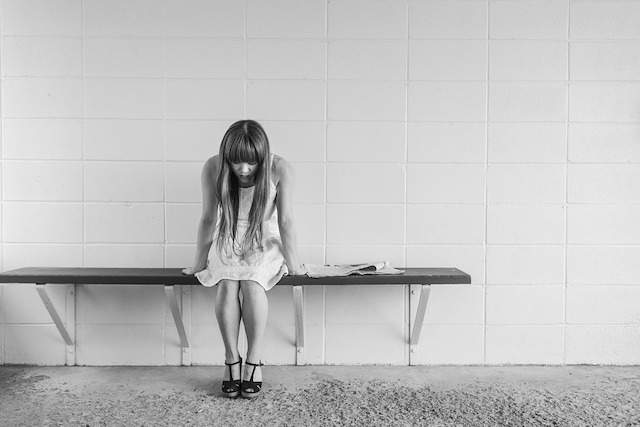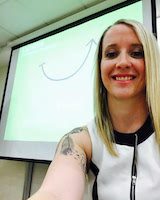Have you ever looked back on your life and realized that you’ve had the same relationship over and over—and the only thing that changed was the person you were dating?
If you’re like me, then the answer to this question is likely half “how did she know” and half “hell yes!” We’re also similar if when you take a closer look at this pattern, you see that this repeated relationship has gotten slightly worse and more painful with each subsequent partner.
I was cruising along in life. I had a loving boyfriend, the most adorable dog, plenty of friends, a job I liked, and I was living 15 minutes from the beach. I figured things couldn’t get much better.
Except they did—for a brief moment, before my world crashed down.
I found out I was pregnant, and then, within hours, I found out my partner had a girlfriend in another state. In the following weeks, I struggled to make sense of my new reality, and maintain my sanity, while I uprooted my life.
Then things got even worse—I lost my baby. The pain I felt was overwhelming. All-encompassing. Inexplicable. This pain, I thought, would kill me if I didn’t do something about it.
That was the first time I stopped to really question why we experience pain and how we can make it go away. When I say “go away” I mean permanently leave the body, not suppress it and hide it under the rug—although I’ve done that too.
The first step toward emotional well being is to know that pain is necessary for us to grow.
Pain is a mechanism for learning. It’s evolutionary. Through pain, we develop emotional strength and resilience. Pain is, and always will be, the greatest teacher we have in this lifetime. It’s how our ancestors and generations before us developed new tools and technology, improved housing standards, and learned the lessons they needed to survive in a world that is ever-changing.
However, whether or not we learn from pain is completely up to us. In order to learn we must show up, ready to listen and take notes. Much the same as if you go to math class, but you sit at the back of the room doodling in your notebook the entire time, if you’re not ready to pay attention to the pain, you won’t learn from it.
And it won’t go away until you do.
This is how I recognized my pattern. Since I had ignored all the pain from all my past relationships, because I never stopped to learn the lesson, I had doomed myself to continue the pattern, each time with a little more pain until I reached my threshold.
In today’s society we’ve become experts at suppressing pain, and not dealing with it. We’ve been led to believe that pain is bad because very few of us have learned how to process and understand our emotions. We tend to think that if we feel pain, and pain is bad, there must be something wrong with us.
On the contrary; if you feel pain, guilt, anger, remorse—congratulations, you’re a human! You are perfectly “normal” and experience what everyone else does, despite what their social media newsfeed may have you believe.
So how can we learn from our pain and end the patterns we’ve been repeating?
We need to understand the ways in which we hide our pain.
Some people hide their pain in more obvious, “traditional” ways—at the bottom of a bottle of whiskey, mixed in with a recreational or prescription drug, or at the bottom of a bag of potato chips.
Most people have a mixed bag of tricks. Being a workaholic has always been my favourite way to avoid the aspects of my life I don’t want to see. Mix in a dash of needing to “rescue” other people, a sprinkling of sex and relationship jumping, a pinch of extremely restrictive dieting alongside intense exercise regimes and—voila! My perfect recipe for avoiding emotions in my 20s.
How else can one escape from or hide their pain? The most common culprits are:
>> Social media
>> Retail therapy
>> Playing the victim and not accepting responsibility for their life
>> Personal development (yes, you can spend so much time working on your problems or “thinking positively” that you never actually develop.)
>> Travelling (which can be a fancy code for running away.)
When we engage in any behaviour in excess, it’s important to ask ourselves why.
How does engaging in this behaviour make me feel? What would happen and how would I feel if I took a day off from this behaviour or activity? If taking a day off from the behaviour results in feeling bad or causes anxiety, it may be being used as a crutch or distraction from underlying pain.
Instead of defaulting to our favourite suppressing technique, we need to sit with our pain.
Take your pain out to dinner and get to know it.
Why is it there? What does it want us to know? Where is the pain coming from? What is the root problem? What skills or personal resources do we need to learn to transcend this pain?
We need to take our time with the pain. Get to know it intimately, because despite how crappy it may feel right now in the short term, in the long run our future selves will thank us.
The last part of the pain equation, and the one part that is so often missed, is to let it go.
Pain is a temporary friend, a wanderer passing through—not a lifelong bestie or a safety blanket. It’s only here to stay if we allow it to.
Pain is meant to be what propels us forward in life. Much like standing on a ship that’s sinking—the pain is there to push us off. Not to watch us drown, but rather, to help us leap forward into our stronger, newer, more resilient selves.
Go ahead, take that leap.
Author: Tiffany Toombs
Image: Pixabay
Editor: Jen Schwartz
Copy Editor: Callie Rushton







Read 0 comments and reply